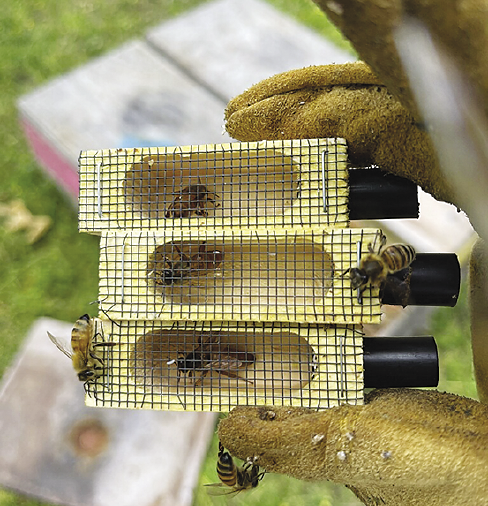What’s the Buzz?
Jackie Salowitz
Tribune Recorder Leader

Albert Einstein once said, “If the bee disappeared off the face of the Earth, man would only have four years left to live.”
Although that statement might not be exactly true, it is true that, “Three-fourths of the world’s flowering plants depend on pollinators to reproduce. Most fruit, vegetable, seed crops and other plants that provide fiber, medicines and fuel are pollinated by animals. Some scientists estimate that one out of every three bites of food we eat exists because of animal pollinators like bees, butterflies and moths, birds and bats, and beetles and other insects.”
Honey bees have been around longer than humans – “there is fossil evidence from 150 million years ago”.
Third generation beekeepers, McCoy’s Honey of Minden City produces approximately 325 thousand pounds of honey yearly, which is sold primarily in 55 gallon drums to a big packing company. They have approximately 10,000 hives.
They take their beehives around the U.S., from Michigan to Maine to California, pollinating everything from cranberries, blueberries, almonds, and pickles. McCoy’s bees just got back from Maine, and now are located anywhere from Caseville to Yale. They employ 13 people, seven of whom are from Nicaragua.
Most of us know that honey bees produce honey and don’t think much more about it. But, the process is anything but simple. First, there is the queen bee. The queen bees primary job is to produce bees. The cost of a queen bee is approximately $30.00. One can tell a queen bee from the others because it is somewhat bigger and longer. She will produce between 2,000-3,000 eggs per day, and she will live 1-2 years. There is only one queen bee per hive, and if she happens to venture into the wrong hive, that will be the end of her. The male bees (drones) primary job is to mate with the queen bee. Female bees (not the queen bee) are the workers. They take the pollen and nectar back to their hives and put it into the honeycomb, six-sided cells they have built out with wax. The “pollen is like protein, one of the building blocks of the animal bodies, it used to feed the young. The nectar is what they turn into honey. They fan it with their wings to evaporate some of the moisture in the liquid. So honey is just concentrated nectar.”

It takes approximately 2 million flowers to make one pound of honey – maybe that’s why we hear – “busy as a bee”. A bee’s life expectancy is a short 45 days. And, yes, it is true – only the female bee stings, and will die after it stings. It is primarily the worker bee that will sting, and although the queen bee could sting a person, it is very rare, as she stays close to the hive.
Watch for more on honeybees in future editions of the Tribune Recorder Leader, as we follow the production of honey with the McCoy family.


